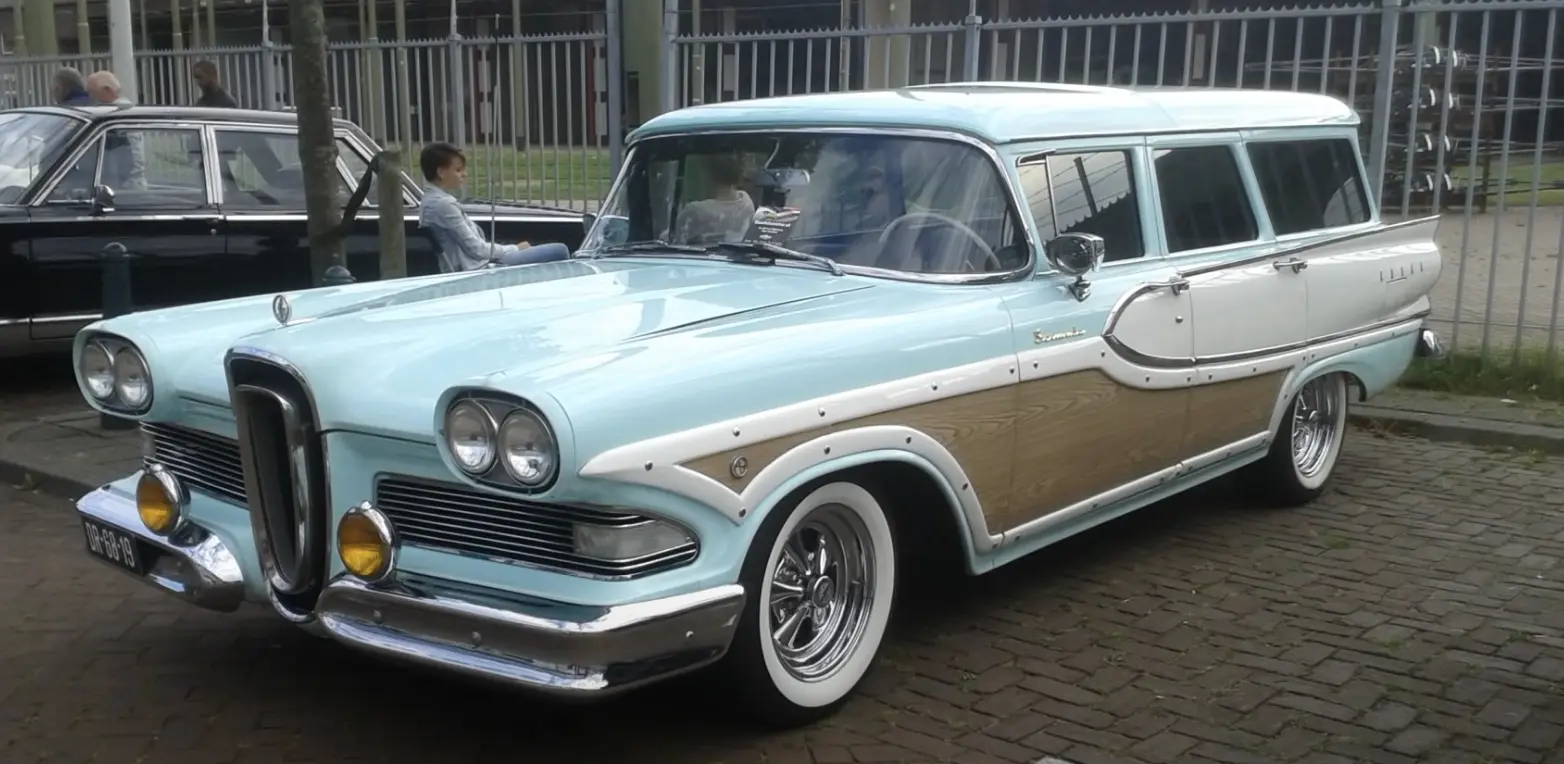Although electric vehicles have been around as long as automobiles themselves, the consumer market for hybrid and fully electric vehicles has been very niche until recent years. Electrified automobiles are a major part of the automotive industry now, but because it’s still an emerging sector, new models have the potential to revolutionize the way these vehicles are made and the way consumers think about them. On that note, credit is due to the pioneering models that helped drive the surge in EV buying and development. Here are some of the most influential electric vehicles (and hybrids) to date:
Tesla Model S
The Tesla Model S, unveiled in 2012, marked a pivotal moment in the evolution of electric vehicles (EVs). As Tesla’s flagship sedan, it shattered the prevailing notion that electric cars were limited in range and performance. The Model S introduced groundbreaking features such as a large touchscreen interface, over-the-air software updates, and advanced autopilot capabilities. Initially offered with various battery options, the Model S has continually evolved, with recent models boasting ranges exceeding 400 miles per charge and achieving 0-60 mph acceleration times of less than 2 seconds in its Plaid version. Its combination of luxury, technology, and performance set a new standard for electric vehicles, compelling traditional automakers to accelerate their own EV development. The Model S’s success demonstrated the viability of electric vehicles as a mainstream option, significantly influencing the industry’s shift toward electrification and contributing to the growing acceptance and popularity of EVs worldwide.

Rivian R1T
The Rivian R1T, launched in 2021, marked a significant milestone in the electric vehicle (EV) industry as one of the first all-electric pickup trucks to hit the market. Founded in 2009, Rivian aimed to create sustainable transportation solutions, and the R1T was their debut vehicle, showcasing their vision of combining utility, performance, and environmental consciousness. The R1T is built on Rivian’s innovative skateboard platform, which houses the battery pack and electric motors, allowing for a spacious and versatile interior.
The R1T comes equipped with four electric motors, one at each wheel, enabling all-wheel drive and impressive off-road capabilities. It offers multiple battery options, with the largest providing a range of over 300 miles per charge. The truck can accelerate from 0 to 60 mph in just 3 seconds, rivaling the performance of many sports cars. It also features a unique “gear tunnel” storage compartment and a versatile truck bed with an integrated power tonneau cover.
The impact of the Rivian R1T on the electric vehicle market has been significant. It has challenged traditional notions of what an electric vehicle can be, proving that EVs can offer the ruggedness and utility expected from a pickup truck while maintaining environmental sustainability. The R1T has set a benchmark for future electric trucks, prompting established automakers and new entrants alike to accelerate their own electric pickup development. As one of the first companies to successfully bring an electric truck to market, Rivian has established itself as a key player in the EV industry and has contributed to the broader acceptance and enthusiasm for electric vehicles across different segments of the automotive market.

Toyota Prius
The Toyota Prius, introduced in 1997, holds the distinction of being the world’s first mass-produced hybrid electric vehicle. It was initially launched in Japan and later made its way to global markets, including the United States in 2000. The Prius was a pioneering vehicle that combined a gasoline engine with an electric motor, setting the stage for the future of hybrid technology. Over the years, the Prius has undergone several generations of development, each improving on efficiency, technology, and design.
The Prius is known for its distinctive aerodynamic shape, which helps optimize fuel efficiency. It features a powertrain that includes a petrol engine and an electric motor, working together to provide a balance between performance and fuel economy. The vehicle’s battery is charged through regenerative braking, eliminating the need for external charging. Throughout its various generations, the Prius has consistently offered impressive fuel economy, with some models achieving over 50 miles per gallon in combined driving conditions.
The impact of the Toyota Prius on the electric vehicle market and the automotive industry as a whole has been profound. It played a crucial role in popularizing hybrid technology and demonstrated that vehicles with alternative powertrains could be practical, reliable, and appealing to consumers. The success of the Prius paved the way for other automakers to invest in hybrid and electric vehicle technology, leading to a more diverse and sustainable market. It also raised public awareness about fuel efficiency and environmental concerns, contributing to a shift in consumer preferences towards more eco-friendly transportation options. Today, the Prius remains an iconic symbol of the hybrid vehicle segment, and its legacy continues to influence the development of electrified vehicles worldwide.
Chevrolet Volt
The Chevrolet Volt, introduced by General Motors in 2010, was a groundbreaking vehicle in the electric vehicle (EV) market, known for its innovative plug-in hybrid technology. The Volt was designed to address the range anxiety associated with all-electric vehicles by combining an electric motor with a gasoline engine. This setup allowed the Volt to operate primarily on electric power for short distances and switch to the gasoline engine for longer trips, providing a total range that could compete with traditional internal combustion engine vehicles.
The first-generation Volt featured a 16 kWh lithium-ion battery pack, providing an electric-only range of about 35 miles, after which the 1.4-liter gasoline engine would kick in to extend the total driving range to around 380 miles. The second generation, launched in 2015, improved significantly on this, with a larger 18.4 kWh battery pack that increased the electric-only range to about 53 miles and a more efficient 1.5-liter gasoline engine. The Volt was also equipped with regenerative braking, a feature that captures energy usually lost during braking and uses it to recharge the battery.
The Chevrolet Volt had a significant impact on the electric vehicle market and the automotive industry as a whole. It was one of the first vehicles to successfully bridge the gap between fully electric vehicles and traditional hybrids, offering a practical solution for drivers who wanted to reduce their carbon footprint but were concerned about the limited range of pure electric vehicles. The Volt’s innovative technology demonstrated the potential of plug-in hybrids and paved the way for other automakers to explore similar concepts. Although production of the Volt was discontinued in 2019, its legacy continues to influence the development of electrified vehicles, and it remains an important milestone in the journey toward a more sustainable automotive future.
Nissan Leaf
The Nissan Leaf, introduced in 2010, is one of the world’s pioneering and best-selling all-electric vehicles. It was developed as part of Nissan’s broader vision to create a more sustainable future through electrified transportation. The Leaf was designed to be an affordable, practical, and zero-emission alternative to traditional internal combustion engine vehicles, targeting a wide range of consumers.
The Nissan Leaf has evolved over the years, with each generation improving in terms of range, performance, and technology. The first-generation Leaf had a modest range of around 73 miles per charge, but by the time the second-generation model was released in 2017, the range had more than doubled, with some variants capable of traveling over 150 miles on a single charge. The latest models offer even greater range, with options exceeding 200 miles per charge, making the Leaf more competitive with other electric vehicles in the market. In addition to increased range, the Leaf has incorporated advanced features such as ProPILOT Assist, Nissan’s semi-autonomous driving system, and e-Pedal, which allows for one-pedal driving.
The impact of the Nissan Leaf on the electric vehicle market has been significant. As one of the first mass-produced and widely available electric cars, it played a crucial role in demonstrating the viability of EVs to consumers and the automotive industry. The Leaf has contributed to the growing acceptance and popularity of electric vehicles, paving the way for other manufacturers to invest in and develop their own EV models. Its success has also helped drive advancements in battery technology and charging infrastructure, further facilitating the transition to electric mobility. Overall, the Nissan Leaf has been instrumental in shaping the electric vehicle market and pushing the automotive industry toward a more sustainable future.

BMW i3
The BMW i3, introduced in 2013, marked a significant milestone for the German automaker as it ventured into the electric vehicle (EV) market. The i3 was part of BMW’s “i” sub-brand, which was dedicated to developing sustainable mobility solutions. The vehicle was designed from the ground up as an electric car, featuring a unique carbon fiber reinforced plastic (CFRP) body to reduce weight and improve efficiency, setting it apart from conventional steel-bodied cars.
The BMW i3 was initially equipped with a 22 kWh lithium-ion battery, providing an electric range of approximately 80-100 miles. In later models, this was upgraded to a 33 kWh battery, extending the range to about 114 miles on a single charge. The i3 also offered an optional range extender (REx), a small gasoline engine that could generate additional electricity to extend the vehicle’s range to around 180 miles. The car’s electric motor produced 170 horsepower, allowing it to accelerate from 0 to 60 mph in about 7 seconds. The i3 was praised for its nimble handling, quick acceleration, and innovative use of sustainable materials in its construction.
The BMW i3 had a significant impact on the electric vehicle market, showcasing that EVs could be premium, innovative, and environmentally friendly. It challenged the perception of electric cars as being solely utilitarian by offering a stylish and fun-to-drive option. The i3’s use of lightweight materials and its focus on sustainability influenced other automakers to consider similar approaches in their EV designs. Although the i3 did not become a mass-market success, it played a crucial role in pushing the industry forward and demonstrated BMW’s commitment to electrification, paving the way for the development of future electric models in the BMW lineup.





